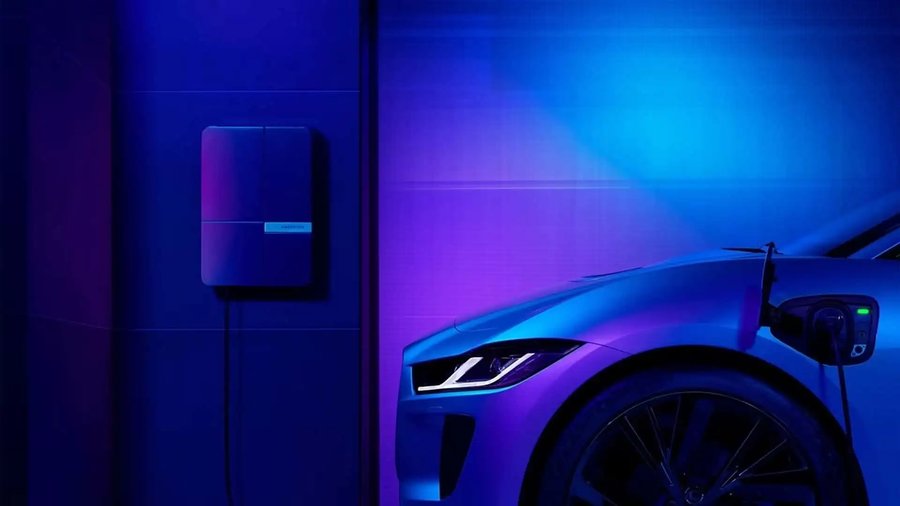Jaguar: EV concept in December, then no new car sales for a year

Jaguar is sticking with its plan to go all-electric from next year despite unsteady EV demand – and it is just months from scrapping its entire existing line-up and revealing a crucial concept car that will set the tone for its new era.
Jaguar’s next-generation models will be unrelated – visually, technically and in their positioning – to the cars that have come before. So far, the brand has described them as only a “copy of nothing” when pressed for clues about how they might look.
But all the questions will be answered in December with the reveal of a radical new concept that closely previews its first new-era EV: a £100k four-door GT with a range in excess of 435 miles, ultra-rapid charging and a dual-motor powertrain with more than 575bhp.
The new concept will set the tone for not just the debut GT but also the new-era design language that will also define the Bentley Bentayga-rivalling SUV and Flying Spur-sized limousine that are due to follow it into dealerships by 2028 – as reported exclusively by Autocar last year.
Jaguar managing director Rawdon Glover told Autocar that a priority when designing these new cars was to rethink the basic principles of EV design, given that today’s electric cars “all look quite similar because they’ve spent too long in a wind tunnel, for range purposes”. He added: “If we look at it, it’s quite a homogenous sector, and I suspect that might be part of the reason why the BEV sector stalled a little bit. Actually, what you want to do is make a car that actually challenges some of those conventions.”
He did not give details, but Autocar has already reported that the three cars will have long, probing bonnets and minimalist, imposing front ends that house a distinctive new grille motif envisioned as the new face of the Jaguar brand. Meanwhile, the LED lights at each end will be so slim as to be almost invisible when off, and it is understood the cars will have no rear windows – like the Polestar 4.
Glover did say that reports of the demise of Jaguar’s leaping cat emblem have been “a bit overexaggerated”, because “for brands that want to operate in the luxury space, their provenance, history and iconography are really important.
“So we have reimagined the leaper for the new brand and for the vehicle, so it will live on, but in a slightly developed format.”
Similarly, Glover hinted that historic names will have some influence over what these cars are called: “When you see the naming strategy, what you will see is acknowledgements and nods to our past, but also aspects which are much more forward-thinking.”
Glover said the GT will be unveiled in the US because of how crucial that market is for Jaguar, but said the brand is not disregarding its origins: “Don’t read that as ‘Britishness isn’t important’. It’s a really important part of the brand, but we’re also a global brand. And look at the size and the scale of the US market – for us it’s really important.”
Jaguar’s move to pure-EV propulsion comes as direct rivals have adjusted their electrification strategies in response to flatlining demand for premium electric cars. Porsche, for example, will produce the petrol-powered Cayenne beyond 2030, Audi has massively ramped up its focus on hybrids, and Mercedes-Benz has extended the life cycle of several plug-in hybrid models due to “slower than expected” EV sales.
Even Jaguar parent company JLR has adjusted its overarching EV strategy, boosting its £15 billion electrification investment package to £18bn so it can develop flexible platforms for Land Rover in a bid to ensure optimal coverage of the market as buyers remain reticent towards EVs.
But Glover is confident that Jaguar’s brand repositioning, technical priorities and new-era design cues will strengthen their appeal in the market. “I think our products, and perhaps the next generation of the products, will make a big difference to how the whole sector is perceived,” he said.
“The rational barriers to EV ownership at the moment still remain: range anxiety and infrastructure, and the need to be charging publicly. If we take each of those in turn, all our vehicles will have significant leverage,” he added, citing the long ranges and rapid-charging speeds of Jaguar’s next EVs.
Glover also said that the brand’s higher prices and lower volume ambitions (put at a maximum of 50,000 units a year) mean it is less preoccupied with mainstream market trends: “We’ve chosen a value over volume game, which is why we’ve gone to the price points we’ve gone to.
“I wouldn’t say the EV market development is irrelevant, but I think it’s less relevant than perhaps it would be if I was in more of a commoditised volume segment.”
Before its new era begins, Jaguar has stopped producing the XE, XF and F-Type in Castle Bromwich, and production of the E-Pace and I-Pace will come to an end at Magna’s factory in Austria by the end of the year. Just the F-Pace will remain in production through 2025, and Glover told Autocar that “we will no longer be on sale for new vehicles” in certain European markets by the end of this year, with the UK to follow “from the early part of next year”.
He also confirmed that UK deliveries of the new electric GT won’t begin before 2026, so there will be a period of around a year with no new Jaguars on sale in the UK. In the meantime, said Glover, retailers will intensify their focus on used cars and aftersales services, “but yes, there will be a period where you will not be able to buy a Jaguar”.
Related News
